In the leafy trees of this woodland, we can find monkeys climbing or a leopard sleeping the day away. Underneath we might see a gazelle grazing. At night, this is the perfect place for a leopard to pounce on a unsuspecting gazelle. Hauling it's catch up into the trees to keep it from scavengers like hyenas and lions.
The acacia tree in Africa also known as desert gold, these well-known landmarks are found on the savanna throughout eastern and southern Africa. Sometimes referred to as thorn trees; these trees are highly drought-resistant and thrive in harsh dry environments due to their tolerance to water scarcity.
The umbrella shape is an adaptation that that allows the tree to capture the maximum amount of sunlight. The bark of most acacias is rich in tannin, which is used for tanning and in the creation of inks and dyes. Gum arabic is harvested from the Acacia Senegal, found in norther Sahara and Sudan, this is used in a wide variety of ways from medicines & adhesives to coating for anti-corrosion on metals to fabrics. Acacia Eioloba also known as the camel thorn or giraffe thorn, is the most recognizable tree in many African nations. The taproot of these trees are more than 3x longer than the tree and can group up to 196 feet, in extremely dry climates this allows access to deep groundwater.
Giraffes eat the undersides of the acacia tree. They carefully wrap their long, prehensile tongues between the spines and remove the leaves. Most species of the African acacia have sharp, long thorns which deters many animals from eating their leaves. These trees can create toxic chemicals trigged by overgrazing which in turn trigger nearby acacia trees to start the making their own poison. This fills the leaves with toxins, which can be quite dangerous to animals if ingested, potentially even lethal.
The African Aviary features a large wall resembling a riverbank, with specialized nest tubes for these birds to build their nests in.
ACACIA WOODLAND SPECIES LIST:
(33 species: 2 species of mammals, 1 species of Reptile, 4 species of fish and 27 species of birds)
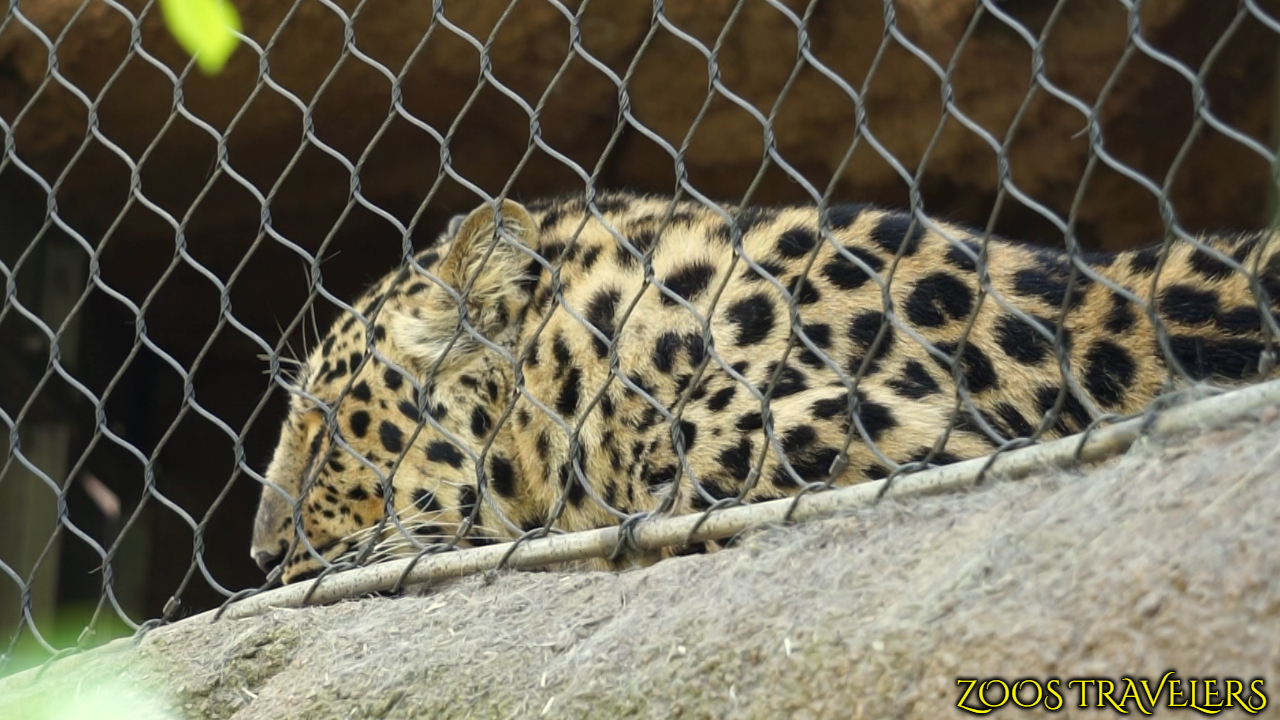 LEOPARD (Panthera Pardus) - Leopards have the largest range of all the big cat species and can live in a wide variety of habitats. This habitat displays Amur Leopard due to this species being critically endangered, wild populations are estimated to be at 60 individuals.
LEOPARD (Panthera Pardus) - Leopards have the largest range of all the big cat species and can live in a wide variety of habitats. This habitat displays Amur Leopard due to this species being critically endangered, wild populations are estimated to be at 60 individuals.
 VERVET MONKEY (Chlorocebus pygerythrus) - Vervets make full use of their favorite habitat in Acacia woodland, spending most of their time in the trees and feasting on leaves, shoots, bark, fruits and flowers. This species lives in social groups led by females and a daughter will often stay with her mother's group for life, females without infants help care for the groups youngsters.
VERVET MONKEY (Chlorocebus pygerythrus) - Vervets make full use of their favorite habitat in Acacia woodland, spending most of their time in the trees and feasting on leaves, shoots, bark, fruits and flowers. This species lives in social groups led by females and a daughter will often stay with her mother's group for life, females without infants help care for the groups youngsters.
 WHITE-FRONTED BEE-EATER (Merops bullockoides) -White-Fronted bee-eaters nest in colonies averaging 100 individuals. A population of bee-eaters may range across many square miles of African savanna, but will come to the same colony to roost, to socialize, and to breed.
WHITE-FRONTED BEE-EATER (Merops bullockoides) -White-Fronted bee-eaters nest in colonies averaging 100 individuals. A population of bee-eaters may range across many square miles of African savanna, but will come to the same colony to roost, to socialize, and to breed.
 WHITE-THROATED BEE-EATER (Merops albicollis) - Bee-eaters catch insects in flight, bringing them back to a perch to prepare them for eating. Where they first rap the insect against a branch to kill it, if it is a bee, wasp or hornet they will then rub it against the branch to remove the stinger and venom sac before swallowing the insect in one single gulp.
WHITE-THROATED BEE-EATER (Merops albicollis) - Bee-eaters catch insects in flight, bringing them back to a perch to prepare them for eating. Where they first rap the insect against a branch to kill it, if it is a bee, wasp or hornet they will then rub it against the branch to remove the stinger and venom sac before swallowing the insect in one single gulp.
 MAGPIE MANNIKIN (Spermestes fringilloides) - This bird finds and breeds with one partner for the rest of its life, where they build their nests high up in the tree canopy given them protection from predators by branches and dense green foliage.
MAGPIE MANNIKIN (Spermestes fringilloides) - This bird finds and breeds with one partner for the rest of its life, where they build their nests high up in the tree canopy given them protection from predators by branches and dense green foliage.
 EMERALD-SPOTTED WOOD-DOVE (Turtur chalcospilos)
EMERALD-SPOTTED WOOD-DOVE (Turtur chalcospilos)
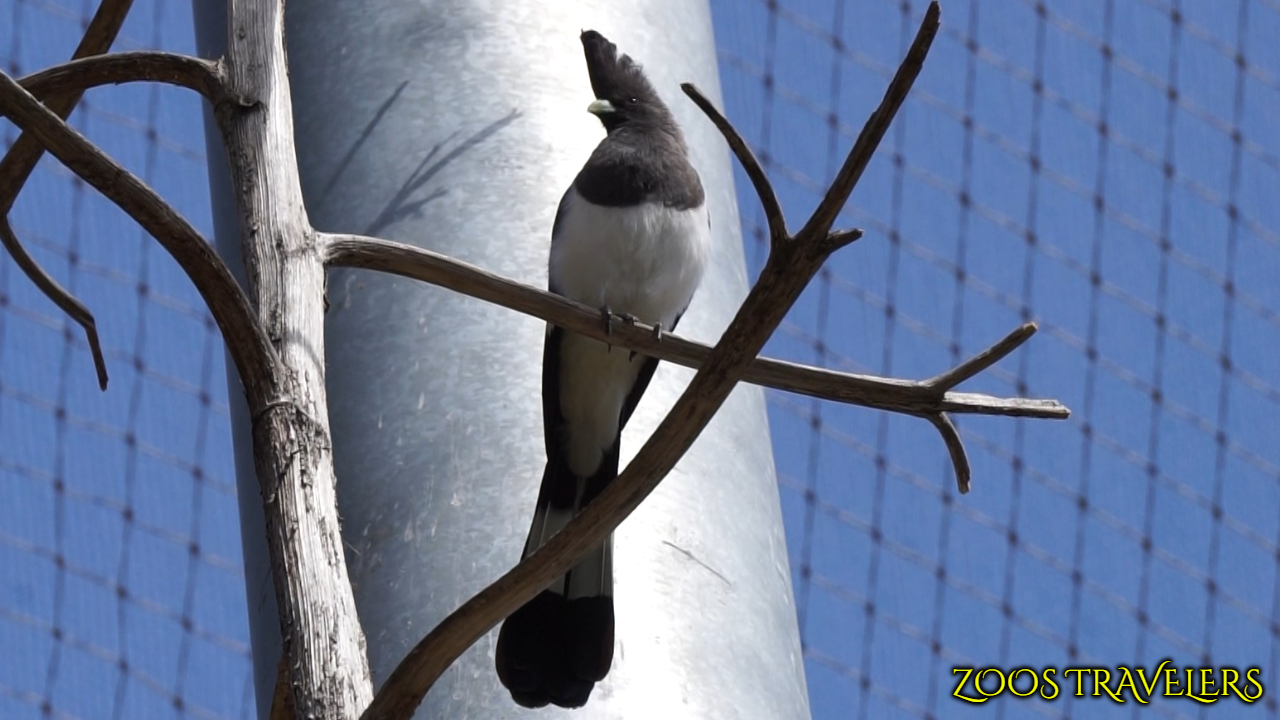 WHITE-BELLIED GO-AWAY-BIRD (Criniferoides laucogaster) - These birds are weak fliers but are adept climbers. When they do fly, they often glide or make a swooping motion.
WHITE-BELLIED GO-AWAY-BIRD (Criniferoides laucogaster) - These birds are weak fliers but are adept climbers. When they do fly, they often glide or make a swooping motion.
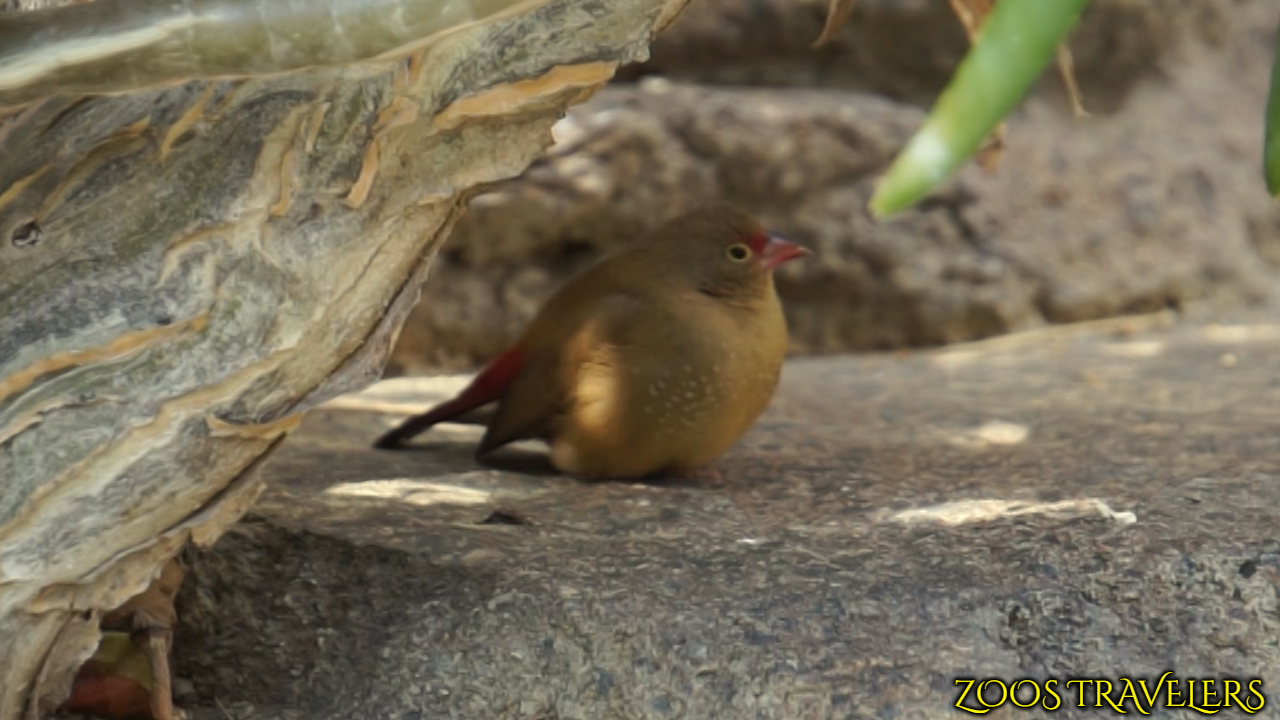 RED-BILLED FIREFINCH (Lagonosticta senegala)
RED-BILLED FIREFINCH (Lagonosticta senegala)
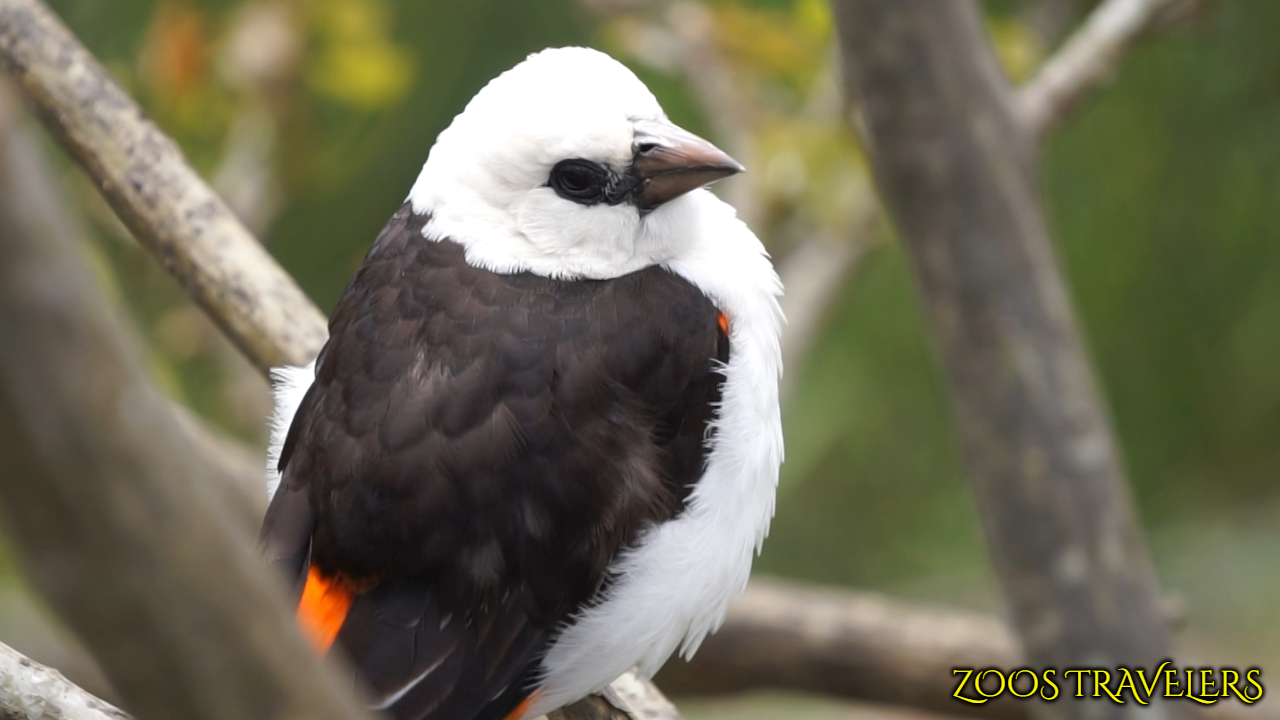 WHITE-HEADED BUFFALO-WEAVER (Dinernellia dinernelli)
WHITE-HEADED BUFFALO-WEAVER (Dinernellia dinernelli)
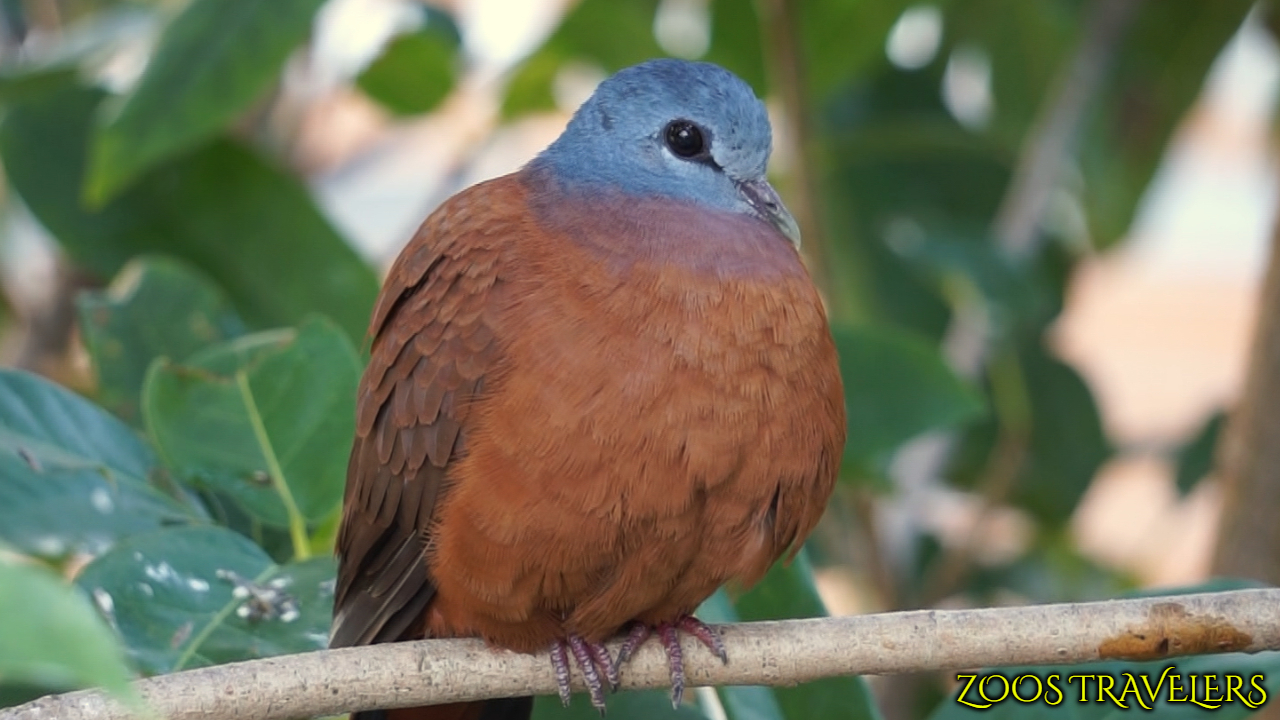 BLUE-HEADED WOOD-DOVE (Turtur brehmeri)
BLUE-HEADED WOOD-DOVE (Turtur brehmeri)
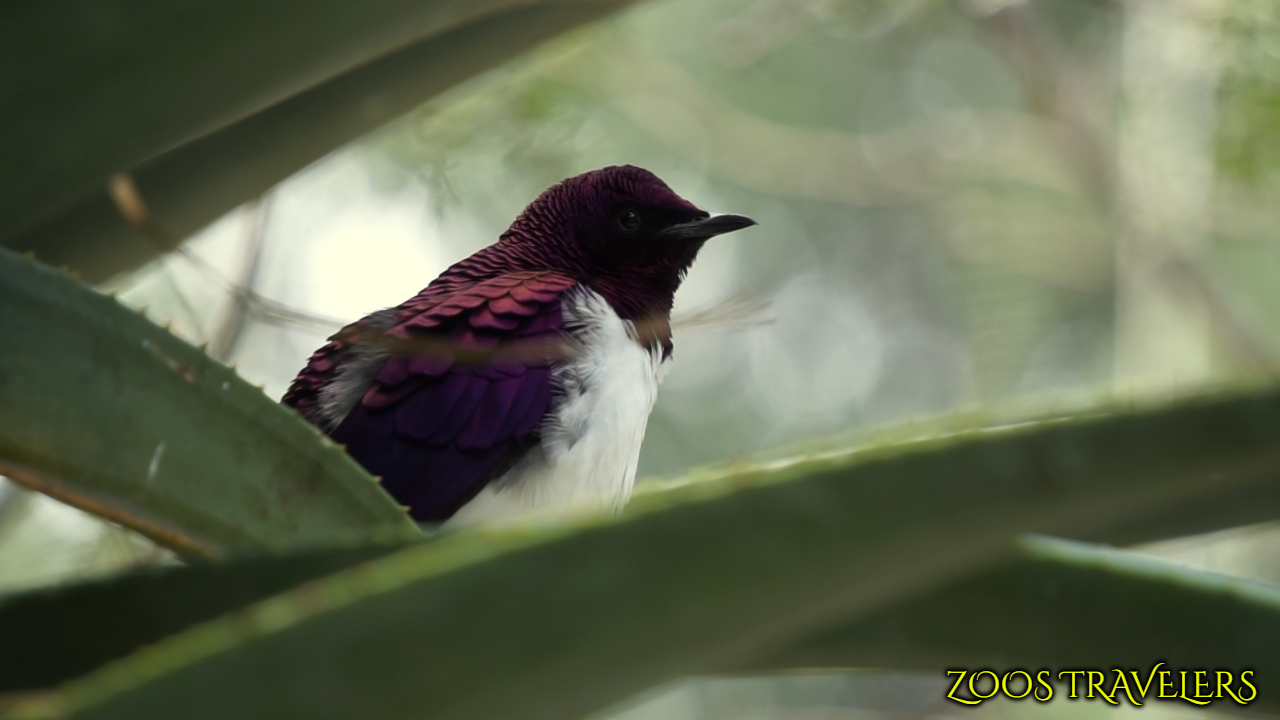 VIOLET-BACKED STARLING (Cinnyricinclus leucogaster) - The female does not have any of the colorful plumage. The forehead to the neck and the sides of the head is brown with a dark central mark on the quills.
VIOLET-BACKED STARLING (Cinnyricinclus leucogaster) - The female does not have any of the colorful plumage. The forehead to the neck and the sides of the head is brown with a dark central mark on the quills.
 NAMAQUA DOVE (Oena capensis) - Parents of this species construct a nest of intertwined twigs, rootlets, and grasses. These birds eat seeds so tiny that most weight less than one milligram. For comparison, that's equal to about three grains of table salt.
NAMAQUA DOVE (Oena capensis) - Parents of this species construct a nest of intertwined twigs, rootlets, and grasses. These birds eat seeds so tiny that most weight less than one milligram. For comparison, that's equal to about three grains of table salt.
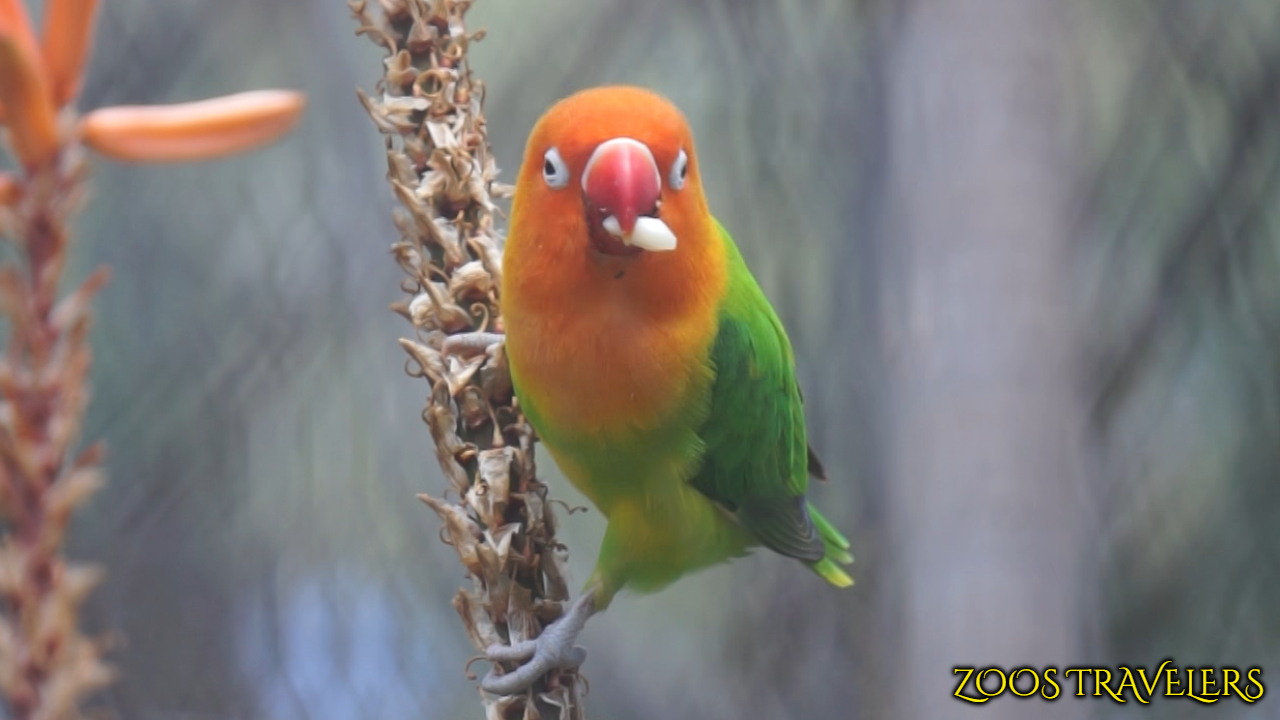 FISCHER'S LOVEBIRD (Agapornis fischeri) - This was the most commonly traded bird across the world in 1987, leading to its population decline in the wild.
FISCHER'S LOVEBIRD (Agapornis fischeri) - This was the most commonly traded bird across the world in 1987, leading to its population decline in the wild.
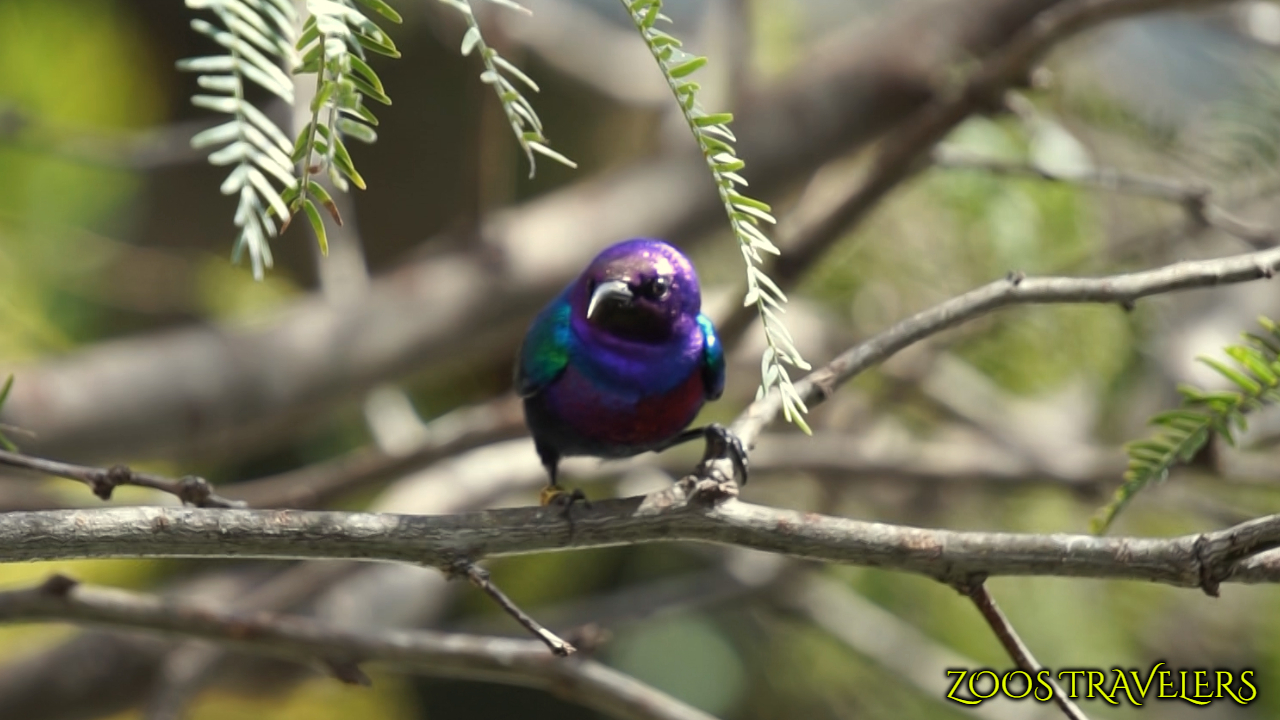 SPLENDID SUNBIRD (Cinnyris coccinigastrus)
SPLENDID SUNBIRD (Cinnyris coccinigastrus)
 TAVETA GOLDEN WEAVER (Ploceus castaneiceps)- These songbirds make up one branch of the extensive weaver family, a family known for crafting some of the most elaborate nests in the world. Weaver nests tend to be round or oval-shaped and made of fine grasses or reeds. and although they are classified as a songbird, their song is described as harsh and unpleasant; sounding like a low-pitched chattering.
TAVETA GOLDEN WEAVER (Ploceus castaneiceps)- These songbirds make up one branch of the extensive weaver family, a family known for crafting some of the most elaborate nests in the world. Weaver nests tend to be round or oval-shaped and made of fine grasses or reeds. and although they are classified as a songbird, their song is described as harsh and unpleasant; sounding like a low-pitched chattering.
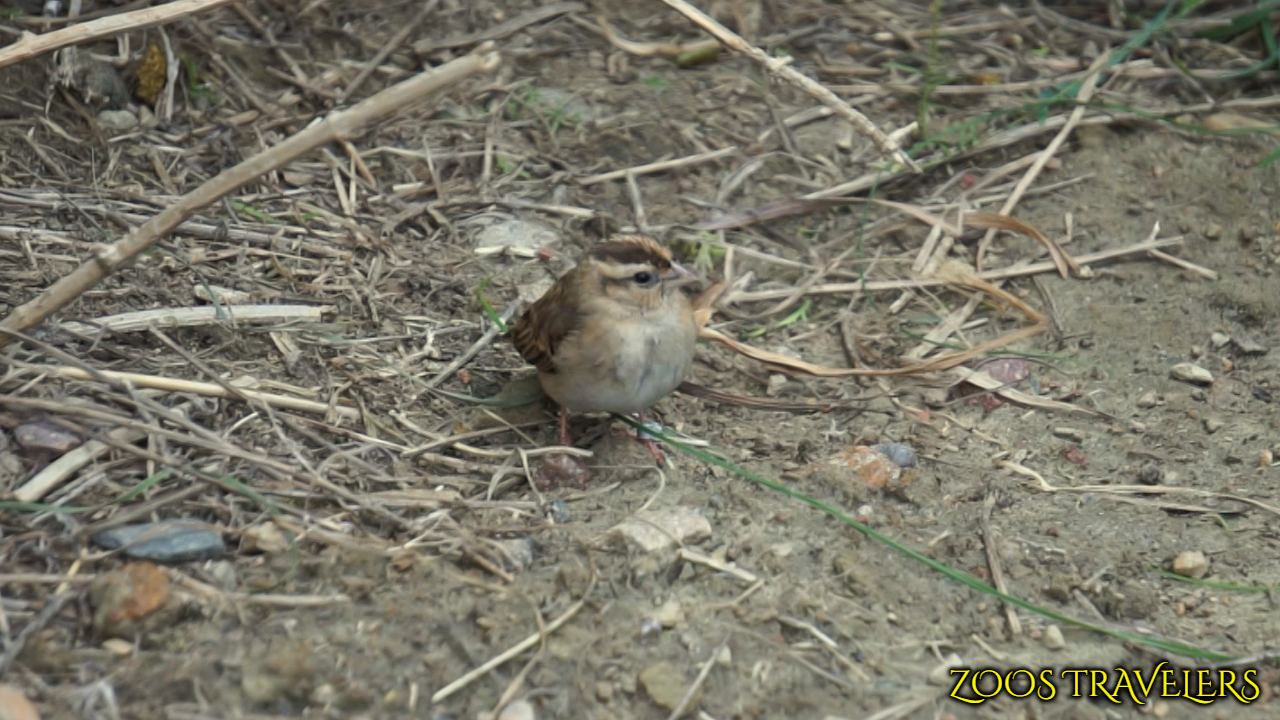 PIN-TAILED WHYDAH (Vidua macroura)
PIN-TAILED WHYDAH (Vidua macroura)
 GOLDEN-BREASTED STARLING (Lamprotornis regius) - Exhibit cooperative breeding, where group members assist with nest-building and feeding the young. In this sort of arrangement, breeding females often solicit food from other members of the group to feed to the young. She crouches and quivers while gaping and vocalizing. The group either ignores her and feeds the young themselves, or gives her part of the food to feed the young, or gives her all the food.
GOLDEN-BREASTED STARLING (Lamprotornis regius) - Exhibit cooperative breeding, where group members assist with nest-building and feeding the young. In this sort of arrangement, breeding females often solicit food from other members of the group to feed to the young. She crouches and quivers while gaping and vocalizing. The group either ignores her and feeds the young themselves, or gives her part of the food to feed the young, or gives her all the food.
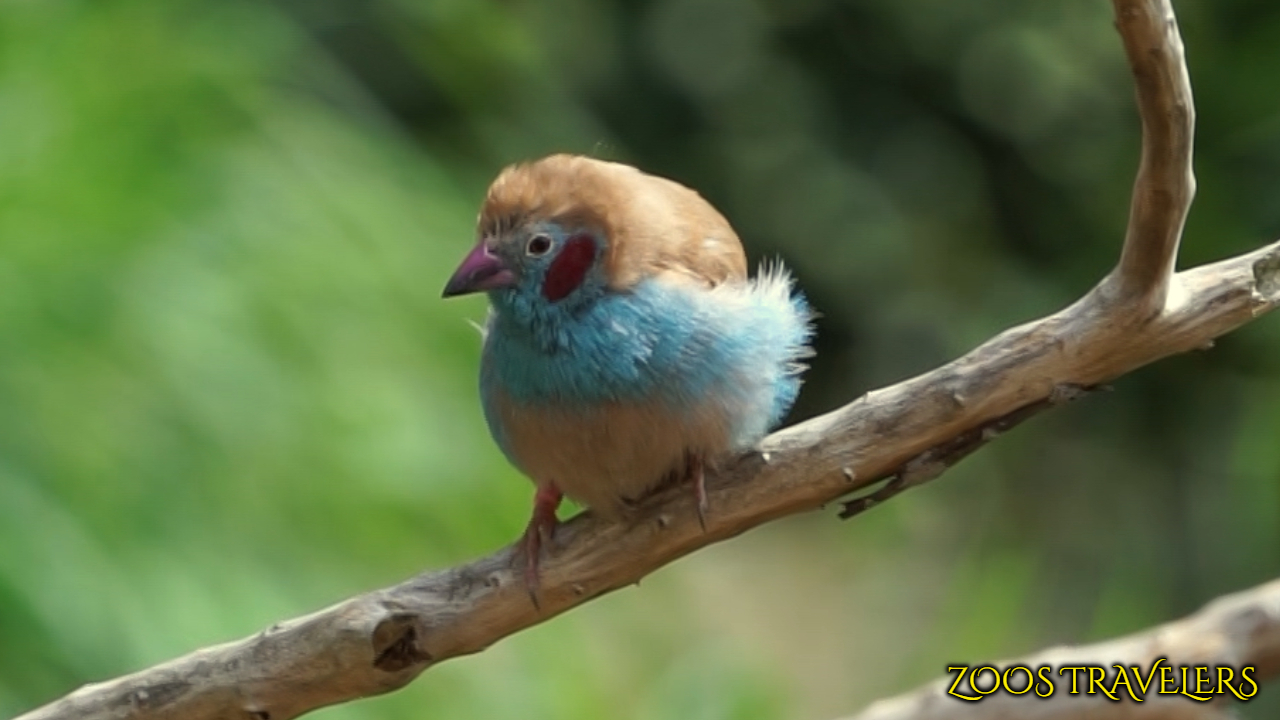 RED-CHEEKED CORDON-BLUE (Uraeginthus bengalus)
RED-CHEEKED CORDON-BLUE (Uraeginthus bengalus)
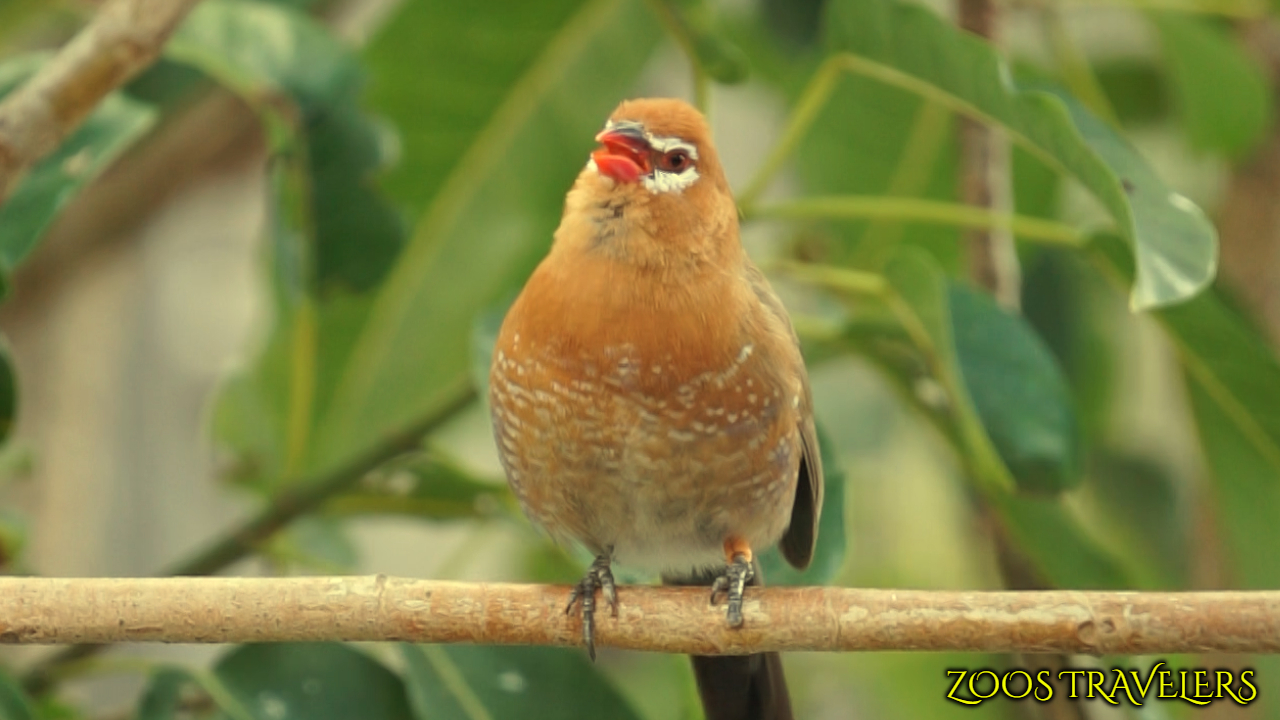 PURPLE GRENADIER (Granatina ianthinogaster) - All ages and sexes of this species have a black tail, and adults have a red bill. The male has a cinnamon-colored head and neck with a blue patch surrounding the eye. The rump is purplish blue and the underparts are violet-blue.
PURPLE GRENADIER (Granatina ianthinogaster) - All ages and sexes of this species have a black tail, and adults have a red bill. The male has a cinnamon-colored head and neck with a blue patch surrounding the eye. The rump is purplish blue and the underparts are violet-blue.
